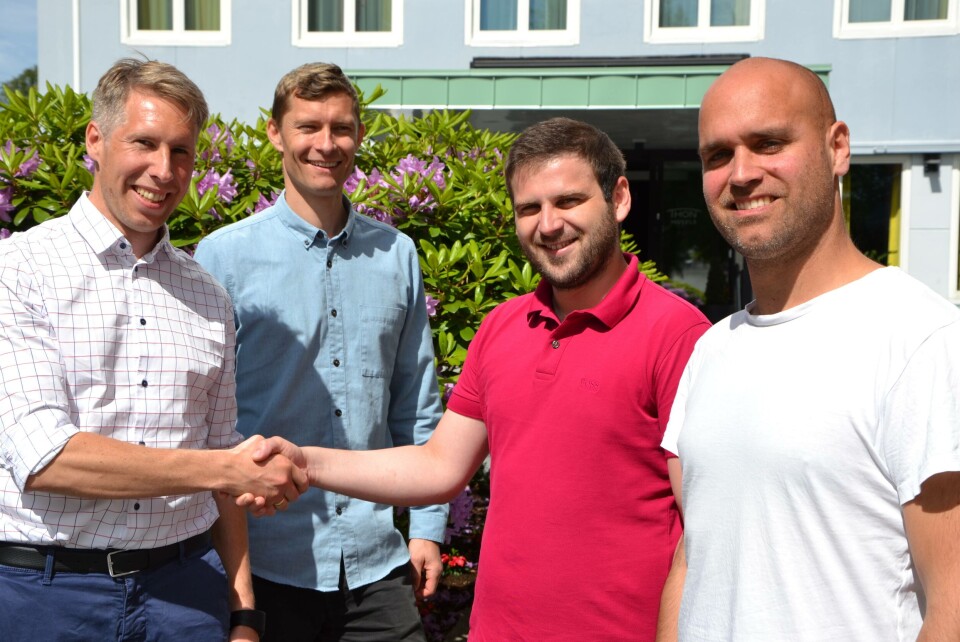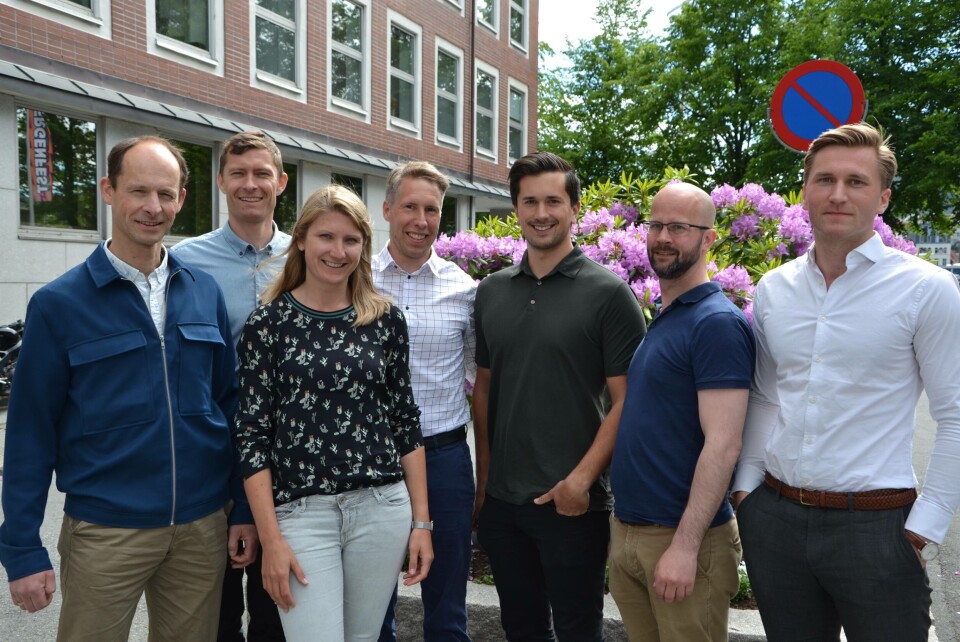
Salmon ‘eat more with sonar feed system’
Autonomous feeding system developer CageEye has reported good results after a year’s testing with a Norwegian salmon farmer, Austevoll Melaks.
The system, which uses advanced sonar technology, has been used in two cages at the farmer’s Klammerholmen site.
“We used the system to monitor the entire cage and measured the appetite response in the fish while they were feeding, thus we have feeding that is controlled and is based on the fish’s appetite,” said Ole Fretheim, sales manager at Oslo-based CageEye.
“Furthermore, we could also adjust the feeding intensity based on how many fish come in the feeding area.”

Greater overview
CageEye has been used in conjunction with a conventional cage camera at Klammerholmen, although it can also be used on its own.
“Usually, one uses only a camera for feeding, then it becomes quite subjective how to analyse data and what one sees,” said Fretheim.
“Our technology measures the fish’s position and covers a lot more of the cage, then you get an objective analysis and a greater overview of the cage so that farmers dare to feed more intensively. It also works regardless of light quality and water conditions.”
He adds that autonomous feeding allows farmers to leave feeding on autopilot, while always having the opportunity to control it themselves.
14% more feed eaten
When CageEye started testing the technology, it aimed to put in place autonomous feeding and has achieved that goal. In addition, chief operating officer Kasper Løberg Tangen told Fish Farming Expert’s sister site, Kyst.no, that the fish in the test cages ate 14% more feed than in other cages, without any overfeeding taking place.
This means the fish reach harvest size more quickly.
Klammerholmen farm manager Nicolae Simion Cosmin shared his experiences about using the system.
“It is easy to handle and work with the hardware and software. Like any start-up project, technology also has its weaknesses, but we are discussing it together continuously. The technology can be further developed,” Cosmin said.
New algorithm
Much of the time spent testing out the technology was used for fine tuning, and now the company is ready to take it a step further with updated technology at another Austevoll Melaks site, according to CageEye project manager Mattis Natvig Segerberg.
“Our brain is now up to date, and we are going to use a new generation algorithm at the other site,” he said.
“This time there are five large cages that are used for autonomous feeding,” added Øyvind Johan Korsøe, a biological consultant in the company.
João Martins, who is manager at the new site, has been in dialogue with his colleague Cosmin, and is looking forward to using the new technology.
12 customers
“The feeding system seems interesting and promising based on the experiences Cosmin has shared with us,” said Martins.
According to sales manager Fretheim, the company currently has around 12 commercial customers, and has close cooperation with research institutions such as the Institute of Marine Research, the University of Stirling in Scotland and the University of Canada.
CageEue COO Tangen added that the company is very concerned with having good interaction with customers and ensuring good follow-up.
“We do not want to be a company that delivers technology and leaves the rest to the customer. Part of the product we sell is follow-up and training so that customers are able to understand, interpret and use the technology themselves,” he said.






















































